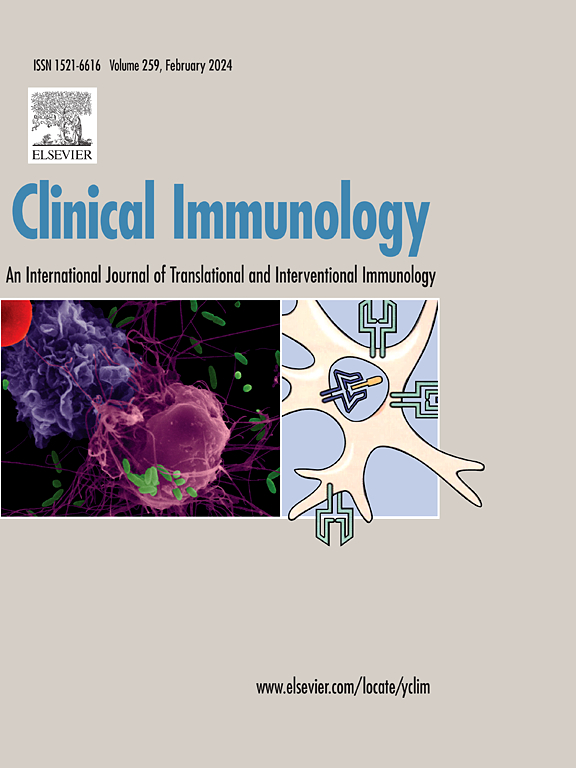Differential control of mycobacterial growth ex vivo by COVID-19 patients is associated with CD8+ CD28+ T cells
IF 3.8
3区 医学
Q2 IMMUNOLOGY
引用次数: 0
Abstract
Diseases caused by SARS-CoV-2 and Mycobacterium tuberculosis (M.tb) represent two public health emergencies. In severe presentations of disease, both pathogens may share a biological niche in the lower respiratory tract. There is significant potential for SARS-CoV-2 and M.tb infections to be co-present within individuals and modulate the respective outcomes of either infection. Here, we investigated how whole blood samples, as well as CD4+ and CD8+ T cells, from individuals hospitalised with acute COVID-19 disease respond to mycobacterial challenge. To do this, samples were assessed by ex vivo mycobacterial growth inhibition assays, immune cell phenotyping by mass cytometry, and whole blood cytokine responses to mycobacterial antigens assessed by flow cytometry. These studies identified a subgroup of COVID-19 patients whose blood had an enhanced capacity to inhibit mycobacterial growth. The ability to control mycobacterial growth was associated with the presence of a distinct non-M.tb-specific CD8+ CD28+ T cell population. This work improves our understanding of factors involved in mycobacterial control.
COVID-19患者体外分枝杆菌生长的差异控制与CD8+ CD28+ T细胞有关。
由SARS-CoV-2和结核分枝杆菌引起的疾病是两种突发公共卫生事件。在疾病的严重表现中,两种病原体可能在下呼吸道共享一个生物生态位。SARS-CoV-2和结核分枝杆菌感染很有可能在个体中同时存在,并调节任何一种感染的各自结果。在这里,我们研究了急性COVID-19疾病住院患者的全血样本以及CD4+和CD8+ T细胞如何对分枝杆菌攻击做出反应。为此,通过体外分枝杆菌生长抑制试验评估样品,通过大量细胞术评估免疫细胞表型,并通过流式细胞术评估全血细胞因子对分枝杆菌抗原的反应。这些研究确定了一个血液抑制分枝杆菌生长能力增强的COVID-19患者亚组。控制分枝杆菌生长的能力与明显的非m。结核病特异性CD8+ CD28+ T细胞群。这项工作提高了我们对分枝杆菌控制相关因素的理解。
本文章由计算机程序翻译,如有差异,请以英文原文为准。
求助全文
约1分钟内获得全文
求助全文
来源期刊

Clinical immunology
医学-免疫学
CiteScore
12.30
自引率
1.20%
发文量
212
审稿时长
34 days
期刊介绍:
Clinical Immunology publishes original research delving into the molecular and cellular foundations of immunological diseases. Additionally, the journal includes reviews covering timely subjects in basic immunology, along with case reports and letters to the editor.
 求助内容:
求助内容: 应助结果提醒方式:
应助结果提醒方式:


